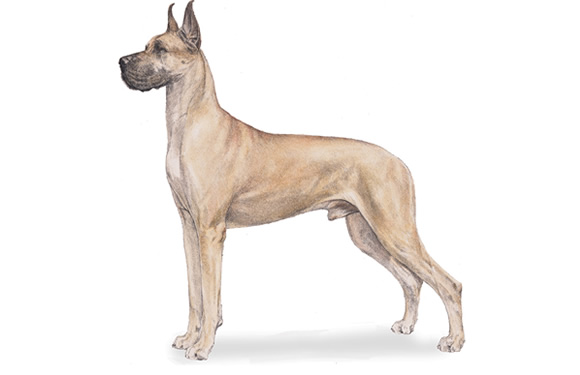

Stately in manner and impressive in size the so-called “king of dogs” is a gentle giant known for its friendly, energetic personality. Drawings resembling Great Danes are claimed to be found on Egyptian monuments from 3000 BC and the earliest written descriptions of dogs similar to them are found in Chinese literature from 1121 BC. The Great Dane we know today is believed to have been developed from crosses between Irish Wolfhounds and old English Mastiffs and was originally employed by Germans as wild boar hunters. The breed eventually evolved into imposing companions and guardians of estates. As family pets they are gentle and loving but, due to their large size, require a degree of caution around children, frail adults, and smaller pets. Although a laid back breed, they need daily exercise to keep them physically fit and at a healthy weight. Their smooth coats come in a wide variety of colors and require minimal grooming.
Great Dane Related Links:
Each AKC approved purebred breed has its own national club. The mission of these “parent breed clubs” is to improve and preserve a particular breed by advancing knowledge about its history, its health, and care requirements. They also work to assure that the breed’s form and function remain true to its historical physical type and character: A Dalmatian, for instance, should be athletic and have a natural affinity for working with horses. A Fox Terrier should have the right body size and shape, and a drive to go after vermin.
Pet owners, breeders, trainers, veterinarians, and others with a special love for a breed become members of the parent breed club to meet like-minded enthusiasts and to support the club’s mission. The nation’s top breed experts are members of the parent club.
The national parent breed club is the first and best place to go to learn about a breed or find a knowledgeable, experienced breeder.
 Discover Animals is a web-based educational resource offered by the NAIA
Discover Animals is a web-based educational resource offered by the NAIA